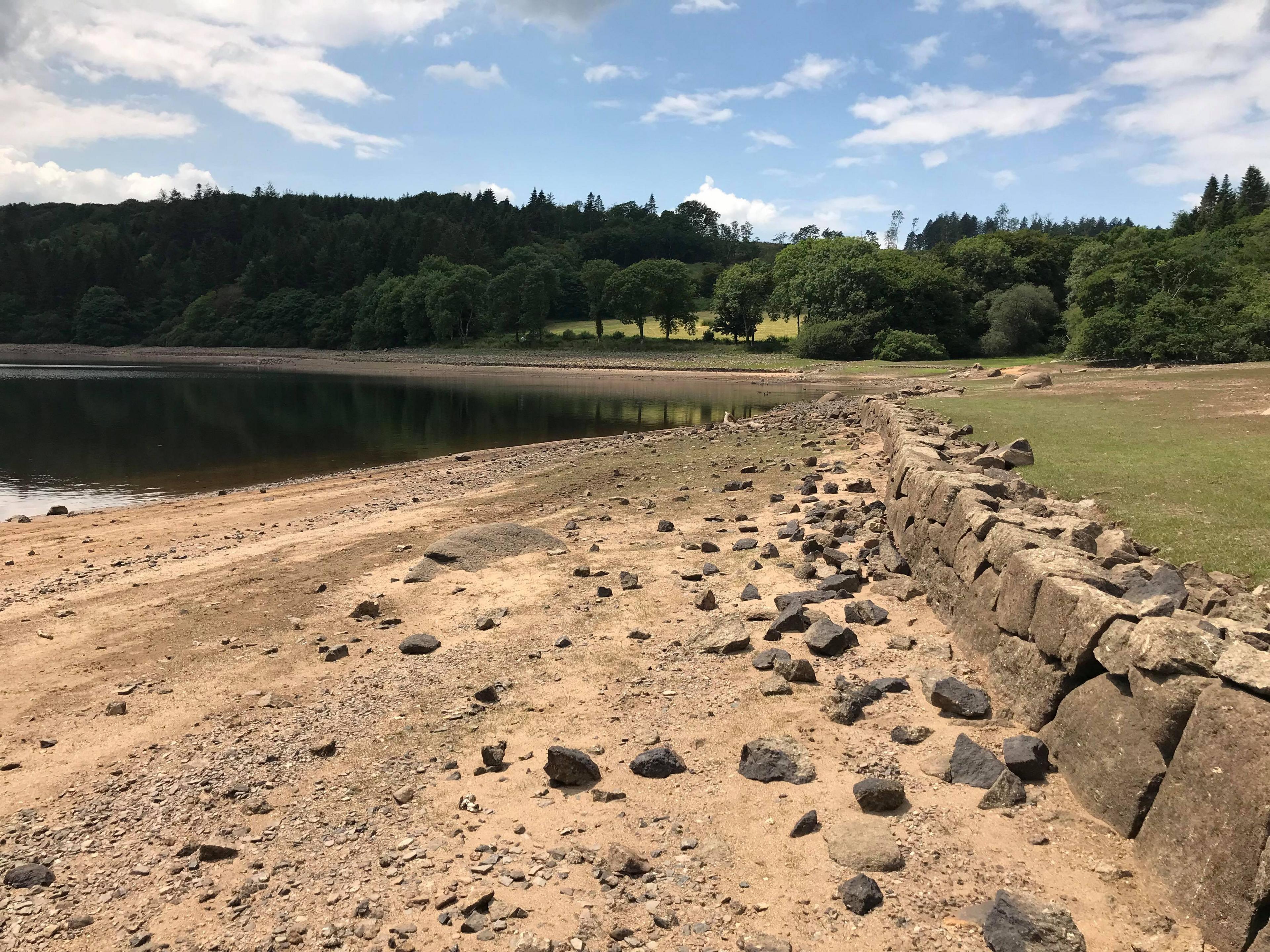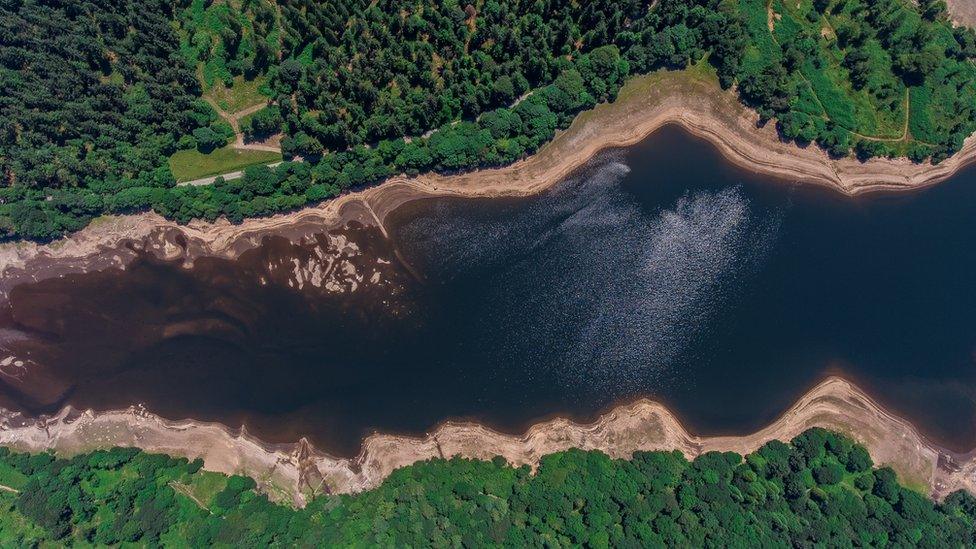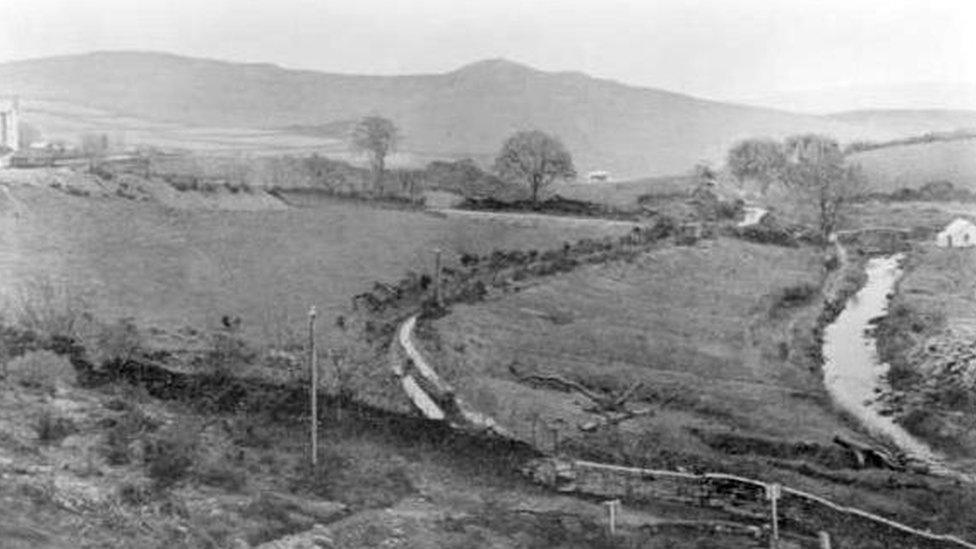UK heatwave reveals 'drowned village' at Burrator Reservoir
- Published
Parts of the 15th Century Longstone Manor estate can be seen for the first times in years
The UK heatwave has uncovered parts of a Dartmoor estate that have been hidden underwater for almost a century.
Burrator Reservoir has reached its lowest level since 2013, South West Water said, at just 48.5% capacity.
Parts of an historic estate, known locally as the "drowned village", have become visible for the first time in decades.
Ruins of a wall can be seen and a farmhouse and bridge lurk beneath the surface.

Burrator Reservoir is at its lowest level since 2013 and an old village wall can now be seen
The valley was first flooded in 1898, submerging landmarks such as Essworthy Farm, Drake's leat and Sheepstor Bridge.
When the reservoir was expanded in 1929, parts of the 15th Century Longstone Manor estate were also plunged underwater.
Prof Bob Stone, who specialises in virtual heritage at the University of Birmingham, has been researching the reservoir since 2012.
He and his team created a digital map of the area - but many locals still believe in an entire mythical settlement under the surface.

Historic ruins of the 15th Century Longstone Manor estate have been revealed
"Many people talk about this drowned village at Burrator that only appears when there is a severe drought," Prof Stone said.
"There's a popular myth that when the water is low enough the spire of the village church will appear above the waterline and the bells will chime."
However, Prof Stone said there is no evidence that the drowned village has ever existed, only Longstone Manor.

Burrator in 1884 before it was flooded to create the reservoir
Prof Stone is visiting the reservoir later this week.
"I'm looking forward to visiting the area as I am keen to see what is visible," he said.
"The remains of the old farmhouse and Sheepstor Bridge are many feet down, so it would be incredibly rare for anyone to see them.
"It would take many weeks of drought for the water to fall that low."
You may also like
Locals said it had been "fascinating" seeing the estate ruins emerge.
"It's amazing to see all of the things that are not usually revealed," Alex Hillman, from Plymouth, said.
"It's fascinating. I've never seen the water this low before."